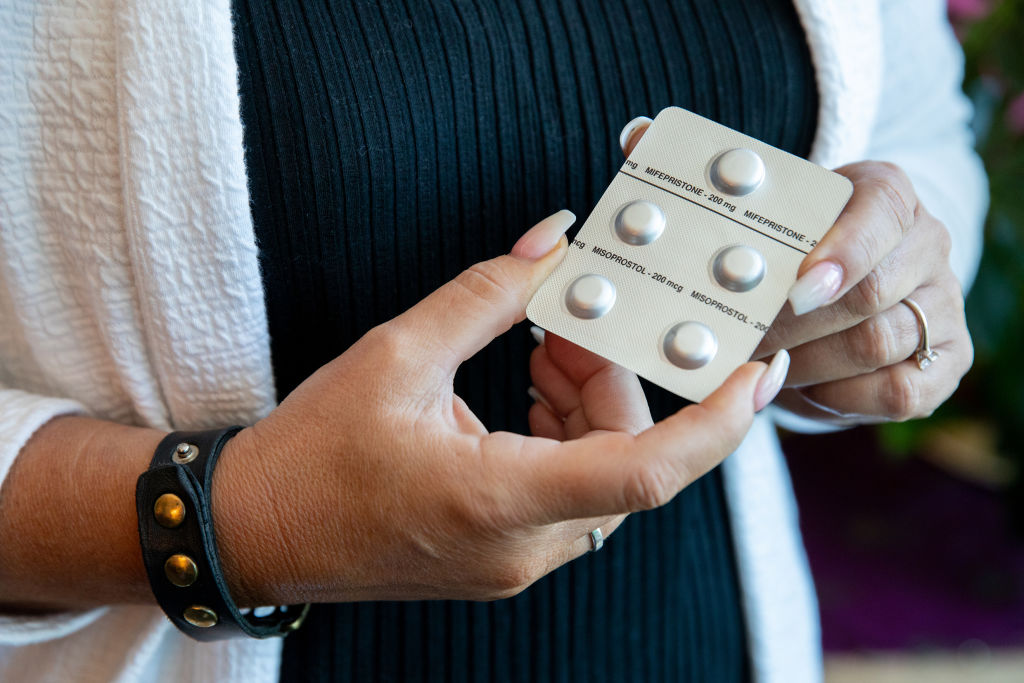
Legal Challenges to Abortion Medication Could Set Off a Domino Effect for Access – A federal appeals court this week ruled that mifepristone—a drug used in half of all U.S. abortions that has come under legal fire this year—should remain available, but with significant restrictions on its use.
The ruling has no immediate effect on the availability of mifepristone. The Supreme Court may take up the case next, meaning the drug’s fate is still in limbo and no one knows exactly how access to it could change in the future.
But what is clear, experts say, is any restriction on mifepristone would have ripple effects for the entire abortion-care system. In 2020, 53% of all facility-based U.S. abortions used medication, rather than surgical methods. If mifepristone becomes harder or impossible to access, providers would either have to change their standards of care to continue offering medication abortions, or find a way for an already overburdened clinical network to squeeze in hundreds of thousands of extra procedural-abortion appointments.
“This could ultimately be a cataclysm for U.S. abortion access,” says Caitlin Myers, who researches the issue at Middlebury College. “Or it might be nothing.”
It all depends on what the courts do next.
Mifepristone was first approved by the U.S. Food and Drug Administration (FDA) in 2000. It is used as the first part of a two-drug regimen to end a pregnancy. Mifepristone is given to stop the pregnancy from progressing, while the second drug, misoprostol, causes cramping and bleeding as the uterus empties.
In November 2022, anti-abortion groups filed a lawsuit challenging the FDA’s approval of mifepristone and recent efforts to make it more accessible. A Texas judge in April sided with those plaintiffs, effectively overturning the FDA’s approval of mifepristone despite the drug’s good safety record in its 20 years of availability. The Justice Department appealed the decision and asked for a pause on its implementation while the legal process plays out. The Supreme Court granted that request, keeping mifepristone available at least temporarily.
This week, a federal appeals court in Louisiana partially broke from the Texas judge’s ruling, deciding that mifepristone should remain available but with restrictions on its use—including removing recent regulatory provisions that allow the drug to be prescribed remotely and sent through the mail; setting limits on which types of clinicians can provide it; and shortening its window of use from within 10 weeks of pregnancy to seven weeks.
The Justice Department has said it will ask the Supreme Court to hear the case, though it’s not clear whether the justices will agree to do so or how they would rule if they did. As such, it’s impossible to say exactly what will happen to mifepristone access. But any threat to medication abortion has serious implications for overall availability of care, Myers says.
Forty percent of abortion clinics in the U.S. solely provide medication abortions, according to a database Myers maintains, and a number of telehealth abortion providers also deal solely in medication abortions. Losing those services entirely would force the 60% of facilities that offer procedural abortions to pick up the slack.
Even if mifepristone’s approval were revoked, however, it’s unlikely that medication abortion would cease to exist entirely in the U.S. Providers could shift to offering misoprostol-only abortions, which are more commonly done in other countries. Research shows misoprostol-only abortions are safe and effective, though they can be more uncomfortable and in some cases require follow-up care to complete the procedure.
So far, at least, misoprostol has not come under the same legal attack as mifepristone, and some states have begun building up supplies in case mifepristone is pulled from the market. Abortion provider Carafem has already begun planning for the potential reality of using only misoprostol, says chief operating officer Melissa Grant. She believes some other providers would do the same, but says some have “greater levels of comfort” with the idea than others.
Some patients might also be nervous about going against the previous standard of care, says Laurie Sobel, associate director of women’s health policy at KFF. “You can assume that some patients are going to opt for a procedure” instead, she says.
That would place additional demand on a network of clinics that is already overstretched, particularly in states that have become destinations for people who must travel for care. Procedural abortions are also typically more resource-intensive than medication abortions. People often take pills in their own homes, whereas a surgical abortion must be performed during an in-clinic appointment, potentially (depending on state law) by a physician. “A lot of times it’s different personnel, it’s a different amount of time to take for the appointment, it’s a different thing,” Myers says. “It’s not like they’re just perfect substitutes.”
Plus, Grant says, if it becomes more difficult for people to get abortion pills early in their pregnancies, more people might need later-term care, which is often costlier, riskier, and harder to find.
For now, these are just hypothetical scenarios; nothing changes until the Supreme Court weighs in. But the stakes of the justices’ decision will be high.
“We can assume that if you take away the most popular method of having an abortion,” Sobel says, “there will be some people who don’t get their abortions.”
Don’t miss: Health Insurance Reform Has Surprisingly Little Impact on Actual Health









